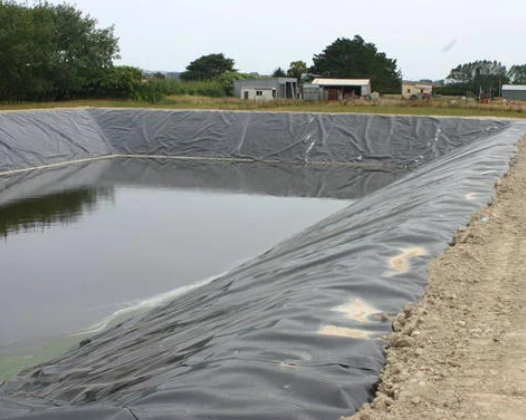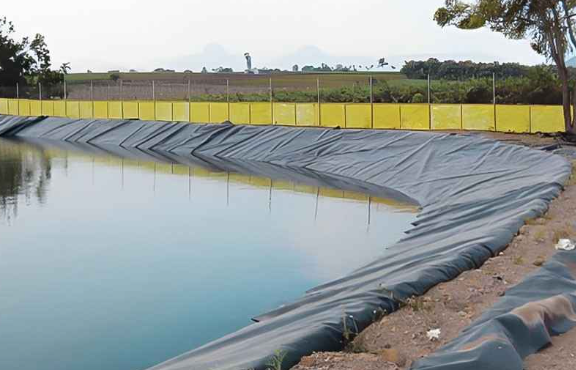- Understanding the Role of Geomembrane Liners in Waste Management
- Innovations in Geomembrane Liners for Water Management
- Geomembrane Liners: A Comprehensive Guide
- The Future of Geomembrane Liners in Civil Engineering
- Geomembrane Liners: Enhancing Landfill Stability
Manager:
WhatsApp:+86 177 0135 2670
Tel:+86 177 0135 2670
Email:marketing@okorder.com
Address:3rd Floor, No.2 Building, No.1 Sanlihe Road
HDPE geomembrane for sewage pool: a key role in environmental protection projects
In modern environmental protection projects, hdpe Geomembrane for sewage pool is playing an increasingly important role as an efficient and durable anti-seepage material. HDPE geomembrane has become the preferred solution for anti-seepage treatment of sewage pools with its excellent anti-seepage performance, chemical stability and tensile strength. This article will give a detailed introduction to the performance characteristics, application fields, construction methods and other aspects of HDPE geomembrane for sewage pools in order to better understand and apply this important environmental protection material.

Performance characteristics
HDPE geomembrane for sewage pool is a flexible waterproof material produced with high-density polyethylene (HDPE) resin as raw material. It has good anti-seepage, chemical stability, tensile strength and weather resistance, and is suitable for anti-seepage treatment of sewage pools in various harsh environments. HDPE geomembrane has excellent resistance to environmental stress cracking, resistance to low temperature, anti-aging, corrosion resistance, as well as a large operating temperature range (-60℃ to +60℃) and a long service life (up to 50 years).
Application fields
HDPE geomembrane for sewage pools has been widely used in many fields. First of all, in environmental protection projects, it is mainly used for anti-seepage treatment in landfills, industrial wastewater pools, chemical storage tanks, sewage treatment plants and other places. By laying HDPE geomembrane, sewage leakage can be effectively prevented and environmental pollution can be reduced. In addition, HDPE geomembrane is also used for horizontal anti-seepage laying and vertical anti-seepage laying of water conservancy projects such as reservoirs, canals, and dams, as well as anti-seepage treatment of seawater and freshwater farms.
Construction method
The construction method of HDPE geomembrane for sewage pools mainly includes two steps: laying and welding. Before laying, the foundation needs to be treated to ensure that the foundation is flat and free of sharp objects to avoid puncturing the geomembrane. Then, according to the design requirements, the HDPE geomembrane is laid on the bottom and side walls of the sewage pool, paying attention to maintaining the integrity and continuity of the membrane. After laying, a special welding machine is used for welding to ensure that the welding quality meets the requirements. After welding is completed, the welds need to be quality inspected to ensure that there is no leakage.
Climate requirements
The construction and use of HDPE geomembrane for sewage pools are affected by climatic conditions. When the temperature is low, the flexibility of the geomembrane will decrease and the construction difficulty will increase. Therefore, when constructing in cold areas, preheating measures need to be taken to improve the flexibility of the geomembrane. At the same time, under high temperature conditions, the geomembrane is susceptible to heat aging, which affects the service life. Therefore, when constructing in high temperature areas, attention should be paid to taking measures such as shading and cooling to reduce the risk of heat aging of the geomembrane.
Characteristics and functions
The HDPE geomembrane for sewage pools has multiple characteristics and functions, which makes it perform well in environmental protection projects. First, its excellent anti-seepage performance can effectively prevent sewage leakage and protect groundwater resources and soil environment. Secondly, HDPE geomembrane has good chemical stability and can resist the erosion of various chemical substances to ensure long-term use. In addition, its high tensile strength and good weather resistance also enable it to maintain stable performance in various harsh environments.
High-quality characteristics
In addition to the above-mentioned characteristics and functions, HDPE geomembrane for sewage pools also has some high-quality characteristics. For example, it has good environmental performance, is non-toxic and harmless, and will not cause secondary pollution to the environment. At the same time, the construction of HDPE geomembrane is simple and fast, which can greatly shorten the construction period and reduce the project cost. In addition, due to its long service life and low maintenance cost, HDPE geomembrane for sewage pools has become an economical and practical environmentally friendly material.
Application prospects
With the increasing awareness of environmental protection and the continuous improvement of environmental protection laws and regulations, the application of HDPE geomembrane for sewage pools in environmental protection projects will become more and more extensive. In the future, with the advancement of technology and the improvement of material performance, HDPE geomembrane will better meet the anti-seepage needs in various complex environments. At the same time, with the deepening of people's understanding of environmental protection materials and the increase in demand, the market prospects of HDPE geomembrane will be broader.

In summary, HDPE geomembrane for sewage pools, as an efficient and durable anti-seepage material, plays an important role in environmental protection projects. We should fully realize its performance characteristics and application value, and continuously optimize the construction methods and technical levels in practical applications to better play its role in environmental protection.
-
2024-06-13Geomembrane is not plastic cloth






